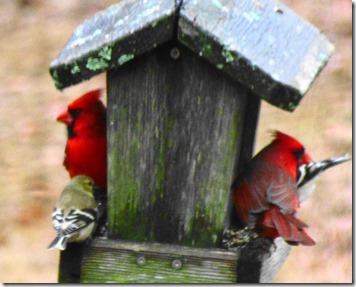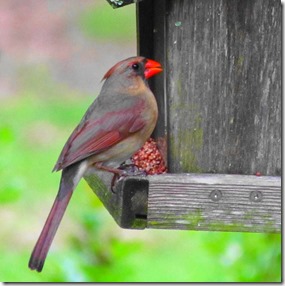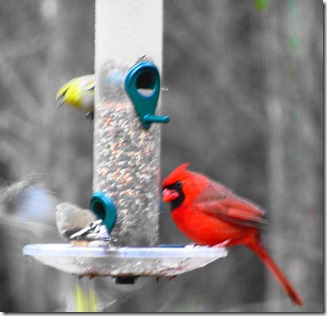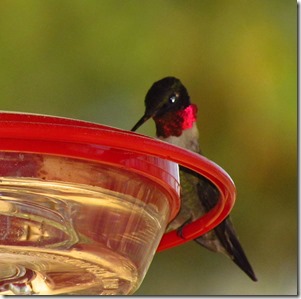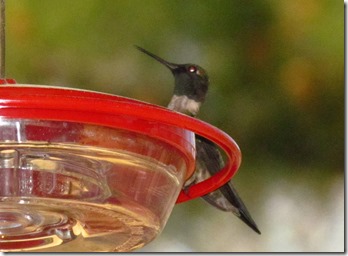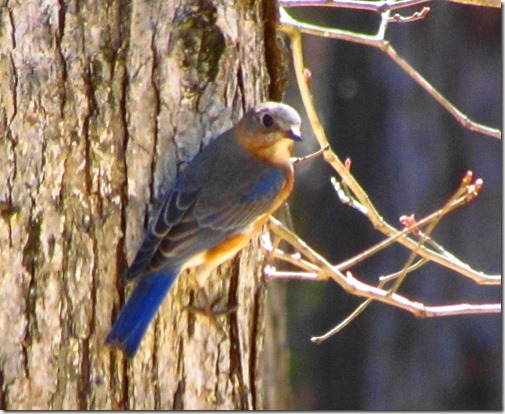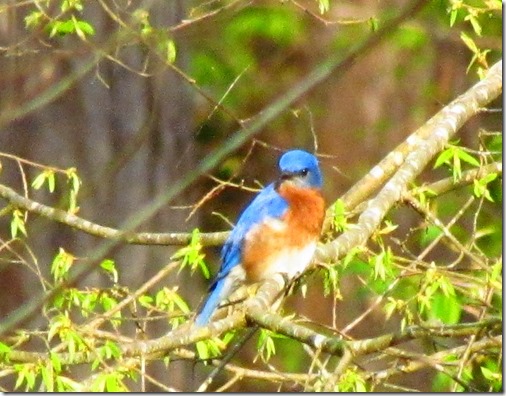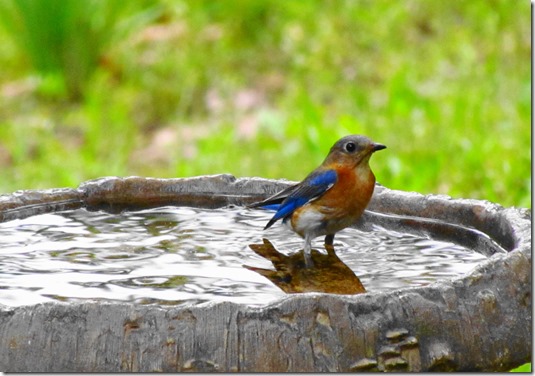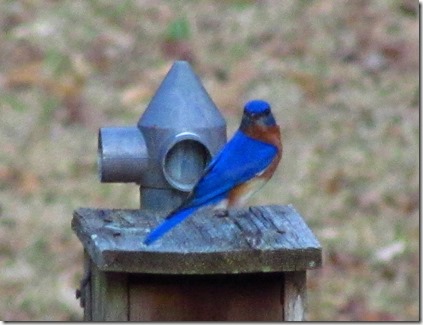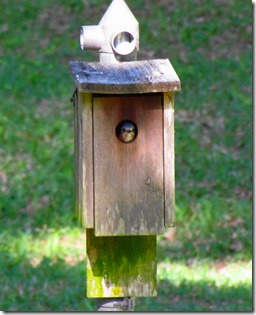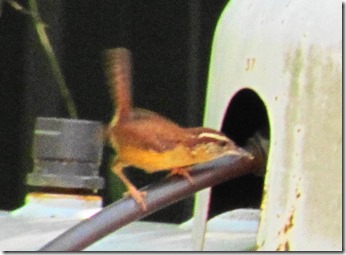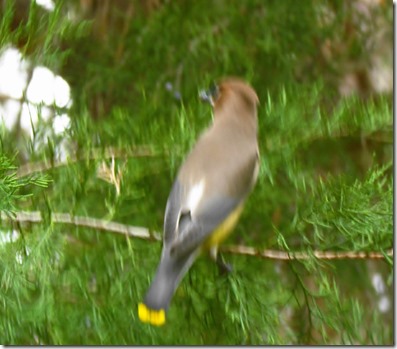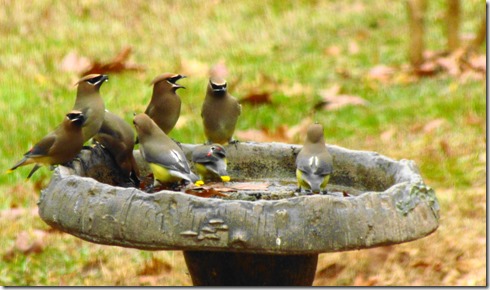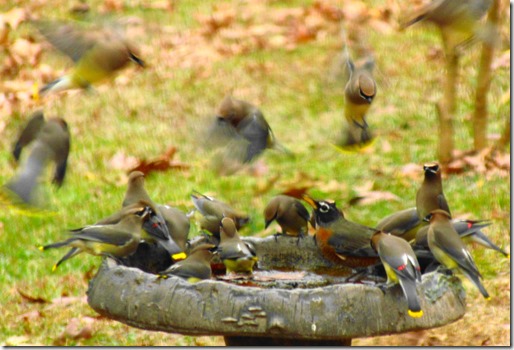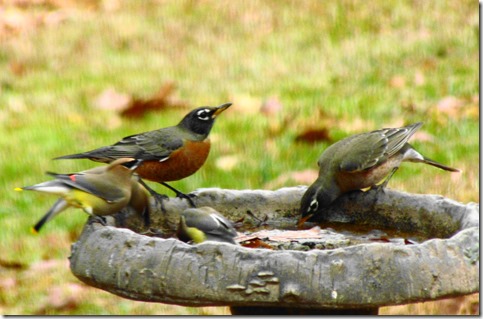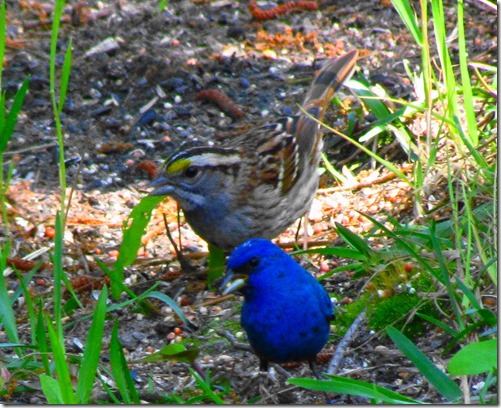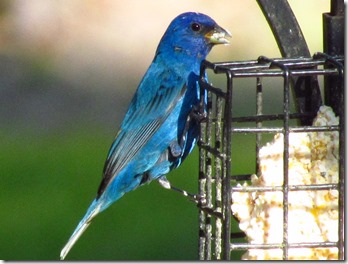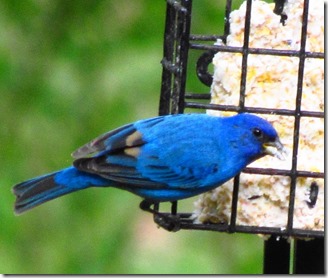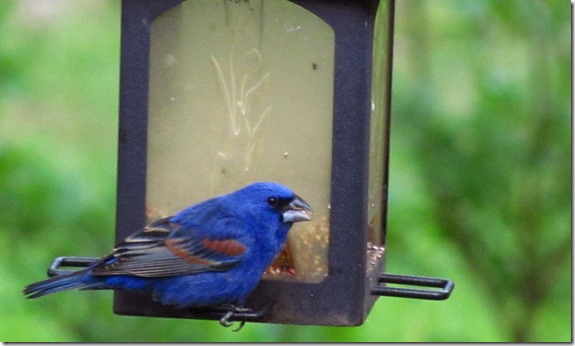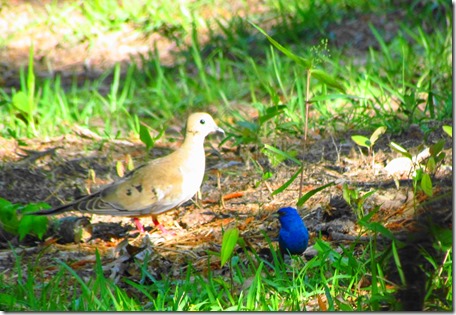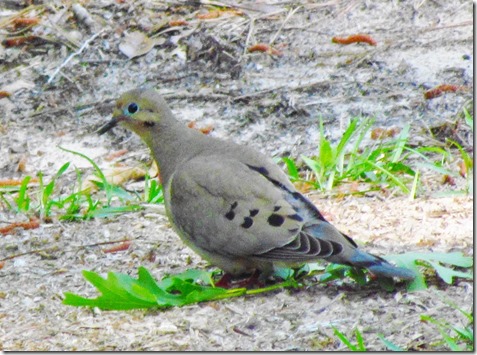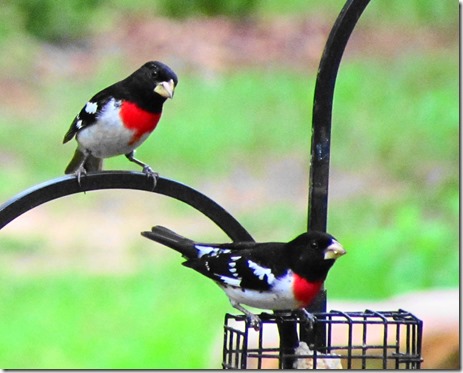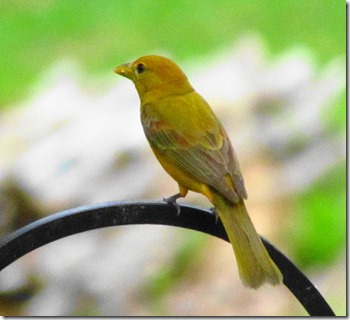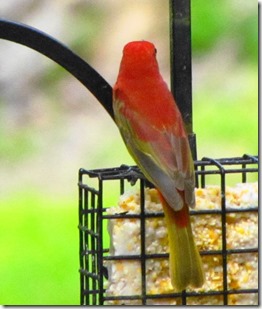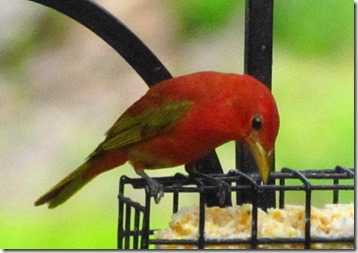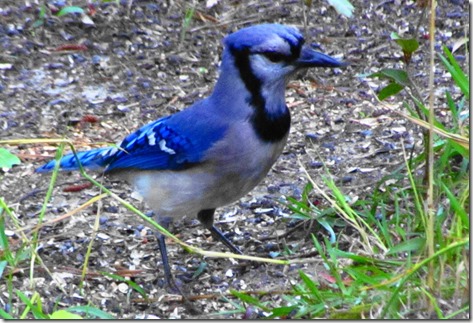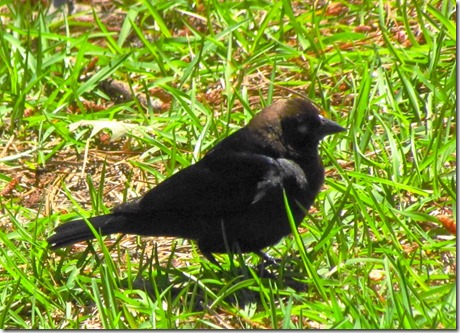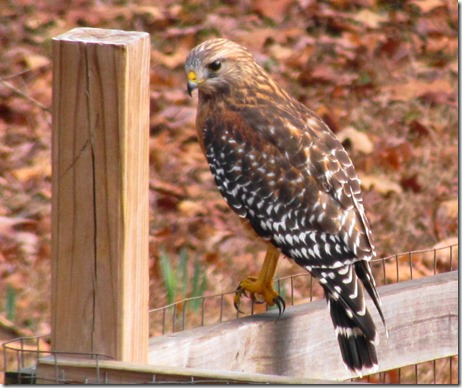We have really enjoyed watching all the different birds that stop by our cabin for a visit.
The Cardinal is a year round resident. They show up at our feeders daily.
The male is bright red, and the female is more of a dusky grey/brown, tinged with red. Through the winter, the Cardinals shared the feeder with the Goldfinches.
The Goldfinches are a winter resident, coming to our area in about October/November, and leaving in about March. In the winter, the Goldfinch is a more somber color and gradually turns a much brighter yellow color for the summer (just before leaving our area and heading north).
In March, just as the Goldfinches are getting ready to move on, we have a new visitor to get ready for……
The Ruby Throated Hummingbird winters in Mexico and Central America and spends the summer in the south. Our little Hummingbirds showed up around the 3rd week of March and are such frequent visitors to our feeders that we had to add another feeder! The male (left) has an iridescent ruby band around his throat, while the female (right) is thinner and longer and lacks the ruby coloring.
These hummingbirds have been entertaining us with their acrobatics.
Our little Bluebirds (the Eastern Bluebird), hold a special place in our hearts……
We spot the bluebirds occasionally throughout the winter, but it is in early spring when they begin to court and nest that they are most noticeable. This a a female, with her more blue/grey back….
And the male, with his bright blue plumage. Both male and females have a reddish breast.
The little bluebirds love to splash in the bird bath……
The male starts his courtship display of sitting on a possible nest site, ducking in and out as if to say, “See, this would make a nice house!”. The female agreed and they built a nest and she laid her eggs. Sadly, this year, the babies did not make it, and we had to clean out the old nest. We have been watching the male, ever hopeful, again sitting on the nest box advertising for a new mate.
We have gotten to watch all kinds of nesting behavior….
This little Song Sparrow built a nest and successfully raised a clutch of babies in the cover over our propane tank!
We are just lucky when we catch some birds which are migratory and just ‘passing through’ our area……
The cedar waxwings come by in a huge flock and clean out the berries on our red cedar tree.
I caught these photos as they stopped by the birdbath for a drink before moving on…..
The Waxwings shared the birdbath with a couple of Robins. A year round resident, though so often spoken of as the first sign of Spring.
Here, two very different migratory birds hunt for seed under the birdfeeder……The white throated Sparrow spends the winter in our area before heading to its summer grounds in Canada. Beside him is the Indigo Bunting.
The Indigo Bunting returns to the south in April from its winter home in Mexico and Central America.
We have usually seen just a couple of Indigo Buntings at a time, and then for only a few days as they seem to just pass through.
We were confused when we first saw this bird…..We thought that we were still seeing the Indigo Bunting, until we looked him up. This is the Blue Grosbeak. (The same family as the Cardinal). 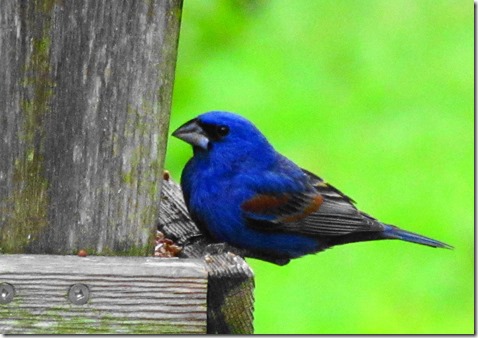
He is larger and heavier than the Bunting, and has a chunky, thick bill and very prominent cinnamon colored bars on his wings. This is the first time that we had identified the Blue Grosbeak.
I snapped this picture of the Indigo Bunting next to a Mourning Dove to show its size…..
Then realized that I take for granted those birds, like the Mourning Dove, that are always around. These Doves usually walk around in pairs, and you can always hear their who..who…whoooo…cries which sound so ‘mournful’ that it gave them their name.
Another surprise at the feeder……Rose Breasted Grosbeaks! These also just pass through for a few days in the Spring on their way to the northern United States and Canada.
This bird was such a surprise, we had to look it up – the Summer Tanager!
The Tanagers usually inhabit the treetops, but these came to the feeder attracted by the suet. The female (left) is more yellow colored, the one on the right is an immature male, described in the book as red with yellow blotches.The mature male will be solid red.
They are beautiful!
The Blue Jay is an ordinary bird and sometimes an ornery bird! They are very territorial and will chase other birds away. They have even been know to attack eggs in a nest. And I have seen a Jay chase cats or harass squirrels!
Another rather odd bird that we had not noticed before is this Brown-headed Cowbird. We though, at first that it was just a crow, but it was not as large, and then we noticed its obviously brown head. The cowbird (named because it usually inhabits cow pastures) is a rather disagreeable fellow who lays its eggs in other birds’ nests and then leaves its young for other birds to raise. Not sure why it had adapted this behavior……..
And I had to include a picture of our hawk……
This is a Red-Shouldered Hawk, that we know nests in our area and we see flying overhead with its shrill cry…….It is a predator, and perhaps has killed one of our little bird friends, but we forgive him because he also hunts mice and snakes. Besides, he is majestic in flight……
We have other birds, which I realized that I haven’t gotten pictures of…..the Crows, which patrol our yard like members of a gang, the chickadees and titmice, the Red-bellied Woodpecker, and I am sure many more. So I guess I will have to keep my eyes open and camera ready….

